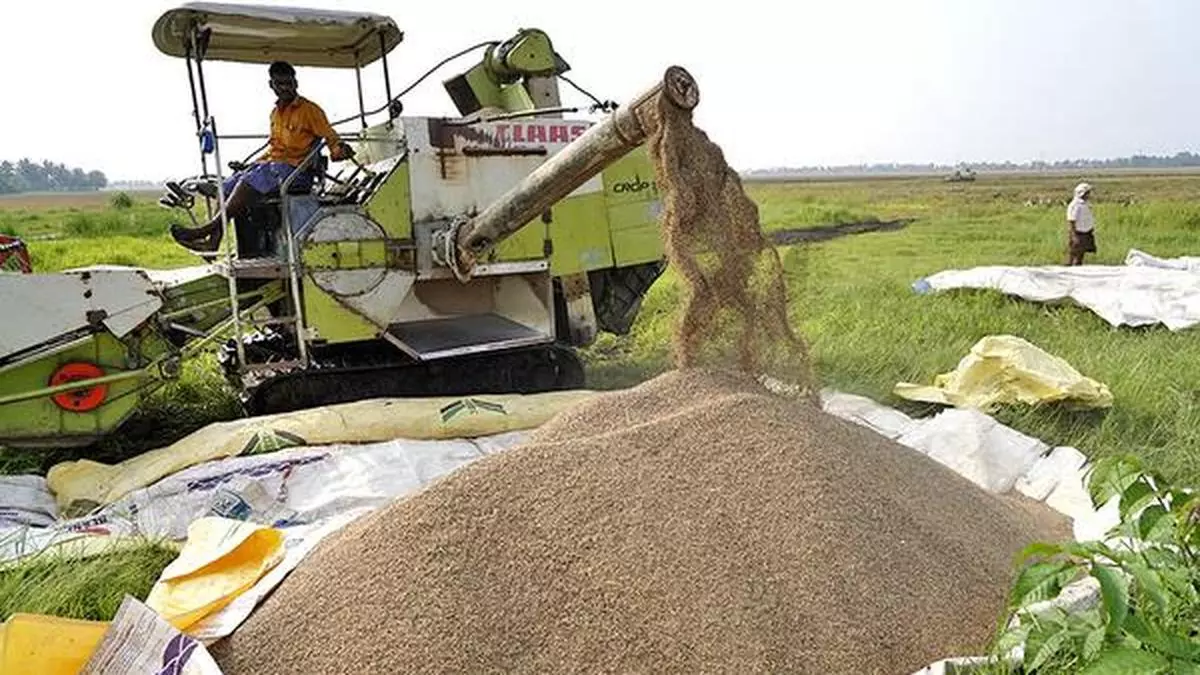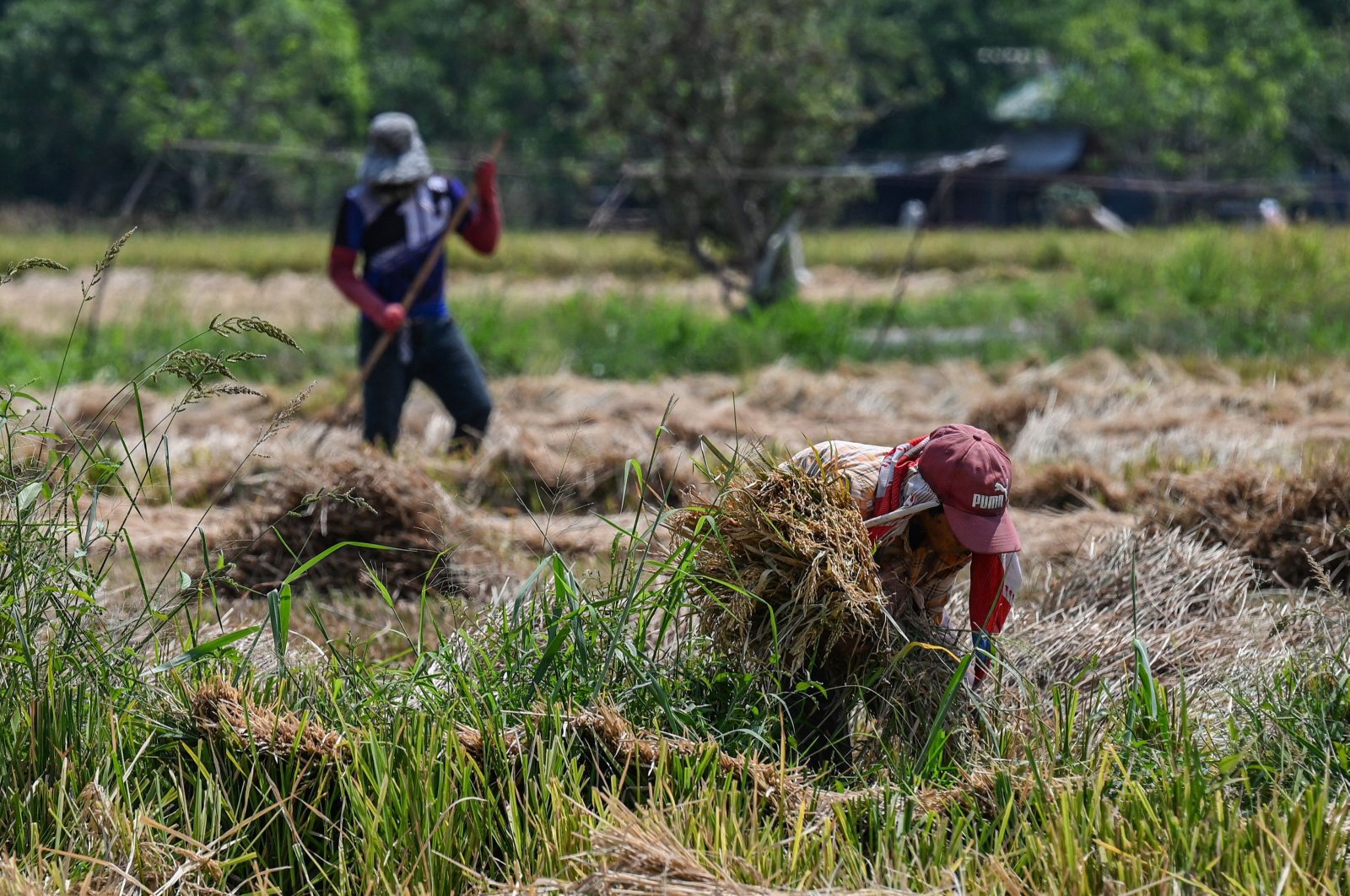Tags
Rice, wheat today has less nutritional quality, more toxic elements than 50 years ago: Study
The production of high quantities of food grains have compromised the nutritional quality of these products, noted the study.

Rice and wheat form the cornerstone of food security and nutrition for people in India, providing over 50 percent of their daily energy needs. (Creative Commons)
Rice and wheat form the cornerstone of food security and nutrition for people in India, providing over 50 percent of their daily energy needs.
Over the past 50 years, since the Green Revolution in India, numerous high-yielding varieties of rice and wheat have been introduced, with only a select few recognised as landmark cultivars — the different varieties of a food grain.
These particular cultivars demonstrated broad adaptability and resistance to various pests and environmental challenges within different agricultural regions, making them highly popular among farmers.
These landmark cultivars significantly improved the fortunes of cereal growers and played a pivotal role in the success of the Green Revolution, ensuring the country’s food sufficiency, significantly increasing food production, and thus alleviating hunger and food shortages.
Higher quantities, lower quality
But, a new study — titled “Historical shifting in grain mineral density of landmark rice and wheat cultivars released over the past 50 years in India” — by Hyderabad-based ICMR-National Institute of Nutrition (NIN) along with institutes of the Indian Council of Agricultural Research (ICAR) found that the production of high quantities of food grains have compromised the nutritional quality of these products while the toxic elements have increased in the grains.
The results of the study suggested that “the modern breeding agenda for genetic gains in the yield of rice and wheat in India have tended to reduce the concentration of essential and beneficial elements, but to enhance toxic elements concentration in grains”.
It added, “Consequently, it dented the dietary value of the major staples (rice and wheat) to the Indian population in the past 50 years or so.”
The study further highlighted the worsening of grain mineral diet quality for both rice and wheat up to 2040.
“This necessitates the urgency of efforts to improve the grain mineral density, at least, essential nutrients, of these staples through genetic interventions for sustenance of nutrition and human health in the years to come. The favourable alleles that were ‘left behind’ during the modern breeding process may be bred back into the cultivars, and grain nutrient profile should mandatorily be evaluated before release of a cultivar in near future,” said the study.
Despite achieving food sufficiency, it remains surprising that India still faces a significant issue of undernutrition, which imposes a substantial economic burden on its society.
Out of the 768 million undernourished individuals worldwide (9.8 percent of the total population), India is home to 224.3 million (2.9 percent).
The core of this problem lies in the food systems that prioritise maximising yields and economic worth without enough attention to the nutritional value, specifically the overall mineral content known as the ionome and its effects on human health.
The study
The study reported altered grain nutrient profile of modern-bred rice — developed through modern breeding techniques — and wheat cultivars — different varieties or strains of wheat that have been selectively bred or developed for specific traits or purposes — diminishing their mineral dietary significance to the Indian population.
The researchers evaluated grain-nutrient profiles of historical landmark high-yielding cultivars of rice and wheat released in succeeding decades since the Green Revolution in the mid-1970s and their impacts on mineral diet quality and human health, with a prediction for decades ahead.
Analysis of grain-nutrient profiles showed a downward trend in concentrations of essential and beneficial elements, but an upward trend in toxic elements in the past 50 years in both rice and wheat.
For example, zinc and iron concentration in grains of rice decreased by 33 percent and 27 percent, respectively. For wheat, they decreased by 30 percent and 19 percent, respectively, for more than 50 years.
A proposed mineral-diet quality index (M-DQI) significantly decreased by 57 percent and 36 percent in the reported period (1960–2010) in rice and wheat, respectively.
“The impoverished M-DQI could impose hostile effects on non-communicable diseases (NCDs) like iron-deficiency anaemia, respiratory, cardiovascular, and musculoskeletal diseases among the Indian population by 2040. Our research calls for an urgency of grain nutrient profiling before releasing a cultivar of staples like rice and wheat in the future,” said the researchers.
Essential elements
Over the decades, there has been a decrease in the concentrations of calcium (Ca), zinc (Zn), iron (Fe), and copper (Cu) in both newer varieties of rice and wheat compared to their older counterparts.
In contrast, there has been an increase in sulphur (S) concentrations observed in the newer varieties of both rice and wheat.
For instance, the concentrations of Ca, Zn, and Fe in the grains of rice and wheat cultivars released in the 1960s were 337.0, 19.9, and 33.6, and 492.3, 24.3, and 57.6 mg per kg, respectively.
These concentrations significantly dropped to 186.3 (a 45 percent decrease), 13.4 (a 33 percent decrease), and 23.5 (a 30 percent decrease), and 344.2 (a 30 percent decrease), 17.6 (a 27 percent decrease), and 46.4 (a 19 percent decrease) mg per kg in cultivars released in the 2000s and 2010s, respectively.
Conversely, sulphur concentration in grains of rice and wheat cultivars released in the 1960s was 472.7 and 518.3 mg per kg, which significantly rose to 653.6 (a 38 percent increase) and 1,744.3 (a 236 percent increase) mg per kg in cultivars of the 2000s and 2010s, respectively.
Beneficial elements
Over time, the levels of beneficial elements decreased in newly developed cultivars compared to their older counterparts in both rice and wheat grains.
For instance, silicon (Si) concentration in grains of rice and wheat cultivars released in the 1960s was 521.9 and 456.6 mg per kg, respectively.
These concentrations significantly decreased to 304.7 (a 42 percent decrease) and 251.4 (a 45 percent decrease) mg per kg in cultivars released in the 2000s and 2010s, respectively.
Apart from gallium (Ga) concentration in wheat grain, there was an upward trend observed for silver (Ag) concentrations in grains of newly released rice and wheat cultivars.
Toxic elements
Over the years, there has been an increasing trend in the concentrations of toxic elements, except for lead (Pb), in newly developed rice cultivars compared to older ones.
However, a reverse downward trend was observed for the concentrations of lead (Pb), chromium (Cr), and arsenic (As) in grains of newly developed wheat cultivars.
For instance, the concentration of As in rice cultivars released in the 1960s was 0.05 mg per kg, which increased significantly to 0.80 (a 1,493 percent rise) mg per kg in cultivars of the 2000s.
In contrast, the concentration decreased from 0.032 mg per kg in wheat cultivars released in the 1960s to 0.015 mg per kg (a 53 percent decrease) in cultivars of the 2010s.
Aluminum (Al) concentration in grains of rice cultivars significantly increased from 29.3 mg per kg in the 1960s to 52.1 (a 78 percent rise) mg per kg in the 2000s.
Meanwhile, its concentration in wheat cultivars rose from 32.6 mg per kg in the 1960s to 44.6 mg per kg (a 37 percent rise) in cultivars of the 2010s.
In contrast, the concentration of Pb significantly decreased from 0.051 to 0.037 mg per kg (a 27 percent decrease) in rice and from 0.045 to 0.012 mg per kg (a 72 percent decrease) in wheat cultivars released over the past 50 years.
The significance of these nutrients
The researcher found that consuming rice might have more harmful impacts on human health compared to its beneficial effects, largely due to the ingestion of higher levels of toxic substances.
Recently, this issue has become critical due to the widespread contamination of essential soil resources with toxic elements, a consequence of rapid industrialization and urbanisation in India.
“There is strong evidence that oral ingestion of metal toxicants like Arsenic (As), Chromium (Cr), Barium (Ba), and Strontium (Sr) imposes toxic effects like lung cancers or chronic respiratory diseases, cardiovascular diseases, hyperkeratosis, renal toxicity and impaired bone calcification. As a fallout of the above phenomena, a naturally high reliance on rice diet could put the Indian population at higher risks of having non-communicable diseases (NCDs) like dermal, respiratory, renal, cardiovascular, or musculoskeletal ones, which would worsen the country’s already high disease burden,” said the researchers.
Conversely, a significant decline in the positive impact of the Mineral-Diet Quality Index (M-DQI) in wheat cultivars until the 2000s indicates a diminishing nutritional benefit for human health due to reduced intake of essential elements, alongside a decrease in wheat consumption.
Essential elements such as phosphorus, calcium, silicon, and vanadium are crucial for bone formation, while zinc is vital for immunity, reproduction, and neurological development, and iron is essential for haemoglobin production.
“Therefore, the depleted constructive effect of M-DQI could result in higher prevalence of NCDs related to neurological, reproductive, iron deficiency anaemia, and musculoskeletal system among the Indians relying on wheat diet,” said the study.
It further added that the claim for higher risks of NCDs corroborated with a report published by the Indian Council of Medical Research (ICMR) indicating a 25 percent rise in it from 1990 to 2016 among the Indian population.
“It assumes a grieving concern considering the fact that rice and wheat together provides more than 50 percent of daily energy requirements for the Indian population,” reads the study.
https://thesouthfirst.com/health/rice-wheat-has-less-nutritional-quality-more-toxic-elements-than-50-years-ago/Published Date: December 30, 2023







